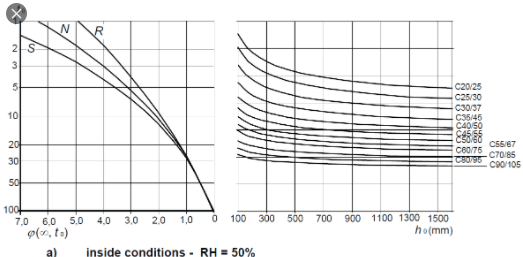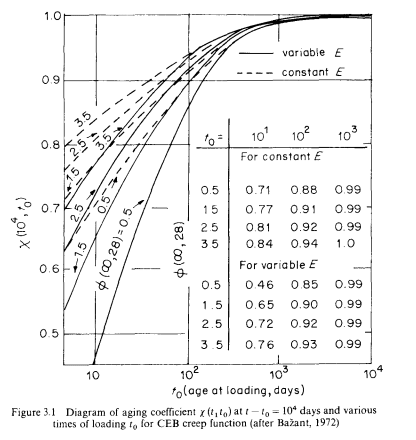Hi Dik,
sigma_0 is the sustained stress.
epsilon_cc is the creep strain due to the sustained stress.
sigma_0 / E_c is the instantaneous strain due to the applied stress. Creep strain is a multiple of the instantaneous strain. The total long-term strain due to the load is the instantaneous strain plus the creep strain. If the creep coefficient is 1.0, the total long term strain is (1+1) = double the short term; if creep = 1.5, the total long-term strain is (1+1.5) = 2.5*short term.
Where is gets interesting is when you add in shrinkage (which isn't load dependent) and the effect of restraint (eg steel doesn't creep or shrink so resists these effects in the concrete). The steel tends to take load away from the concrete, meaning the concrete stress isn't constant even if the applied load is. This effect is what the age-adjusted effective modulus method tries to address (one of the graphs in the original post was for the ageing coefficient).






